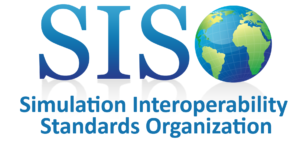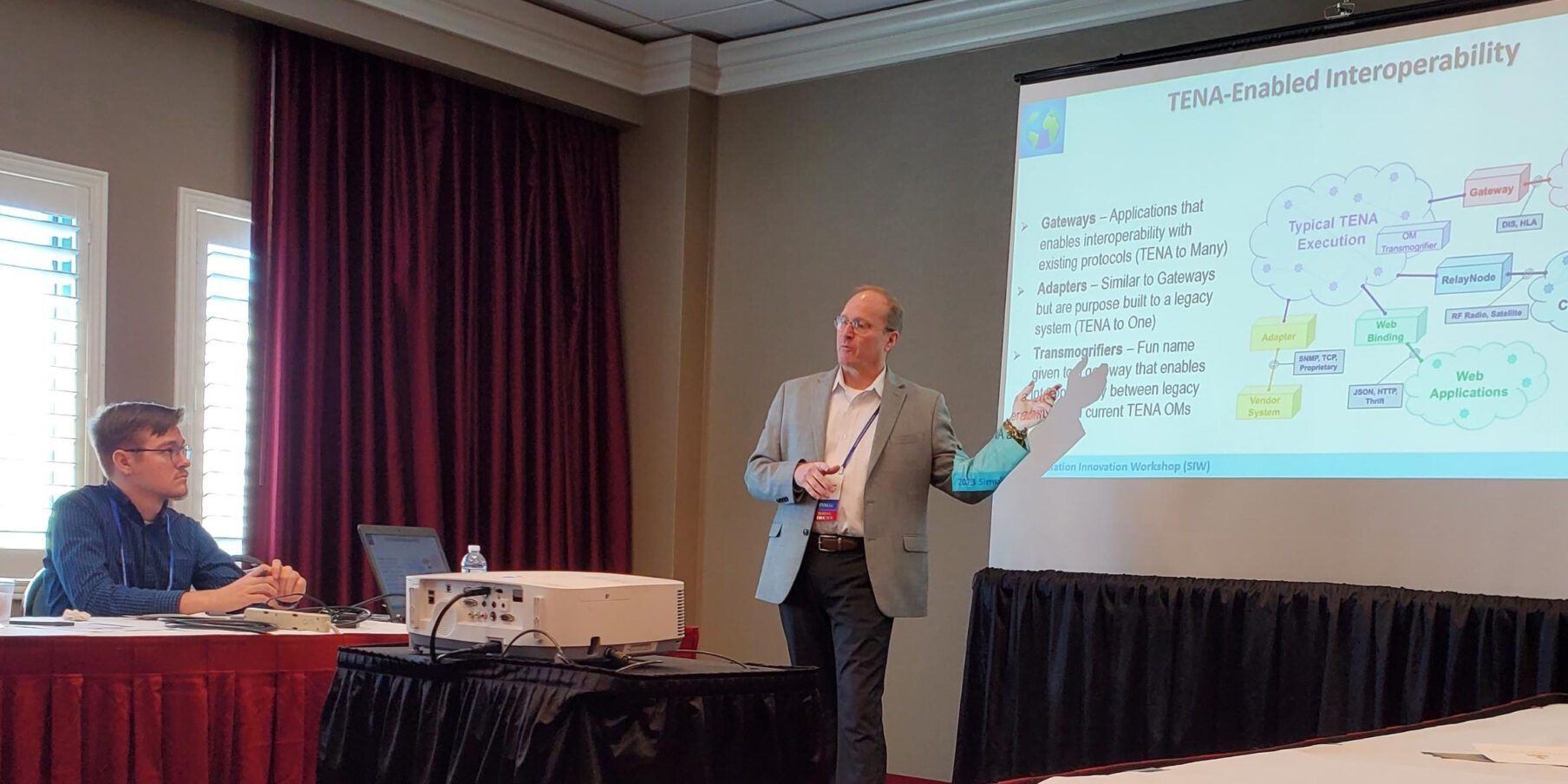 Trideum Corporation is participating again in the SISO 2023 Simulation Innovation Workshop (SIW), 13-17 February in Orlando, FL.
Trideum Corporation is participating again in the SISO 2023 Simulation Innovation Workshop (SIW), 13-17 February in Orlando, FL.
A tutorial, “Live, Virtual and Constructive (LVC) Simulation Interoperability 101” will be presented on Monday, 13 February at 1030, by Kurt Lessmann, Trideum’s Chief Technology Officer, and Damon Curry from Pitch Technologies. The tutorial is intended for decision makers with a general understanding of modeling and simulation, who have recently encountered the benefits of distributed simulation, and need a top-level understanding of LVC interoperability and the supporting standards, technology, and processes.
Two papers will also be presented. Developing Realistic Rates for PNPSC Net Models describes and reports two survey efforts used to collect and validate the transition rates used for three different PNPSC models of CAPEC attack patterns. STK Integration into Sensor to Shooter Testbed provides an overview of the STS test bed and discusses integration of the STK toolkit into the environment, provides the technical approach for implementing additional STK plugins, and the planned path forward for the STS testbed.
Tutorial
Live, Virtual and Constructive (LVC) Simulation Interoperability 101
Monday, 13 February 2023 | 1030 – 1200
The tutorial is intended for decision makers who have recently come into contact with distributed simulation and need a top-level understanding of Live, Virtual and Constructive (LVC) interoperability and the supporting standards, technology and processes. The purpose of this tutorial is to provide managers the necessary insight needed to support intelligent decision making. The tutorial will discuss the various domains of the technology and how it can potentially relate to their LVC needs. The tutorial provides a relevant use case as the mechanism to explain the concepts and the solutions required to achieve success.
The tutorial will not be an in-depth technology review of LVC interoperability yet will provide sufficient management level insight into interoperability solutions and standards like Distributed Interactive Simulation (DIS), High Level Architecture (HLA), and the Test and Training Enabling Architecture (TENA) product line.
Presenters:
- Kurt Lessmann – Chief Technology Officer, Trideum Corporation
- Damon Curry – Business Development Manager, Pitch Technologies
Papers
Developing Realistic Rates for PNPSC Net Models
Monday, 13 February | 1530-1600
Petri Nets with Players, Strategies, and Costs (PNPSC) is an extension of Petri nets specifically designed to model cyberattacks. In the PNPSC representation of the dynamic state of a cyberattack, actions and events during a cyberattack are modeled by the firing of Petri net transitions, which in the PNPSC formalism have associated transition rates and costs. The PNPSC formalism also represents the strategies of the competing “players,” i.e., the attacker and defender. This formalism has been the basis for a long-running research program. Projects within that program include automatically generating PNPSC models from the MITRE Common Attack Pattern Enumeration and Classification (CAPEC) database of cyberattack patterns, verification and validation of the models using several complementary methods, composing multiple PNPSC models into models of realistic computer systems, and using machine learning to improve the strategies of players present in the formalism.
Although the overall structure of the models generated from the CAPEC database has been successfully validated, the transition rates and costs used in the models have not, and prior to this work, notional rates and costs have been used for all PNPSC models.
Once realistic transition rates and costs are defined and validated, the PNPSC formalism will be better able to model real computer systems, and the players’ strategies may be useful to guide real-world measures to anticipate cyberattacks and enhance security while reducing costs.
This paper describes and reports two survey efforts used to collect and validate the transition rates used for three different PNPSC models of CAPEC attack patterns.
Authors:
- Michael Bearss – Senior Software Engineer, Trideum Corporation
- Mikel Petty – Professor, Computer Science, University of Alabama in Huntsville
STK Integration into Sensor to Shooter Testbed
Tuesday, 14 February 2023 | 1600-1630
Simulating Sensor to Shooter (STS) kill chains is only practical with a robust live-virtual-constructive (LVC) environment that can stimulate, test, and measure the performance of the complete system of systems that make up the kill chain.
Trideum Corporation has developed an initial simulation testbed to support hardware-in-the-loop (HWIL) integration and cyber testing of various STS configurations. Early instances of the STS testbed focused on developing and integrating specific simulations to provide representation of the STS kill chain components, as well as the supporting friendly and threat forces.
Current work is focusing on providing realistic sensor representation to include the integration of space-based sensor systems. To accomplish the goal of integrating space-based sensors into the STS testbed, Trideum Corporation is working to extend the functionality of the Systems Tool Kit (STK). STK is an established engineering application which provides an intuitive modeling environment to analyze platforms and payloads in a realistic mission context.
While STK does offer simulation interoperability support via the provided Distributed Simulation (Dsim) extension, additional tactical communications representation is desired for inclusion into the STS testbed.
This paper discusses the overview of the STS test bed, integration of the STK toolkit into the environment, provides the technical approach for implementing additional STK plugins to support the integration of space-based sensor tracking data, and the planned path forward for the STS testbed.
Authors:
- Adam Wandler, Trideum Corporation
- Joseph Fann – Software Engineering Lead, Trideum Corporation
- Aaron Robinson, Trideum Corporation
- Tilghman Turner – Computer Scientist, United States Department of the Army
